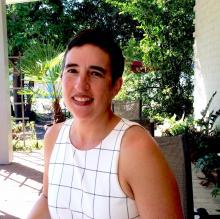Recently, the Orange County Health Department launched plans for the Family Success Alliance, modeled after the success of the Harlem Children’s Zone.
With its inception as the Rheedlen Centers for Children and Families in 1970, the Harlem Children’s Zone aims to disrupt generational poverty with a holistic, long-term approach providing education and support from early childhood through college, supportive services to families to prevent homelessness, and health services including obesity prevention. Serving over 13,000 children and 13,000 adults in 97 blocks of Central Harlem, the engaged children (70% in the served blocks) have a 92% college acceptance rate, 100% of pre-K participants are assessed as school ready, and the 800 local employees fuel economic growth. The Harlem Children’s Zone also serves as the Model for President Obama’s Promise Neighborhood Initiative that has awarded 58 grants to communities across the country to implement similar programs.
In Orange County extensive data was collected to identify the most high need “zones” in our county. Scoring was based on 3 criteria: need (economic, education, health, and family and community including free and reduced priced lunch participation, low quality early childhood programs, school subject proficiency, percent of children on Medicaid, and percent of households with Housing Choice/Section 8 vouchers), reach (percent and number of children in poverty), and equity (academic performance disparity – the percentage point difference between the percent of passing EOG scores for Economically Advantaged students and those who are Not Economically Advantaged). The six zones with the highest scores have been identified and through an application process two will be selected as pilot sites. The six zones are:
Zone 1. Efland Corridor surrounding Efland Cheeks Elementary and Gravelly Middle School
Zone 2. Downtown Hillsborough encompassing Cameron Park, Central, Hillsborough, and Pathways Elementary Schools, Stanford Middle School, and Orange High School
Zone 3. 85 & 40 Junction around Grady Brown Elementary School and Cedar Ridge High School
Zone 4. East of 40 including New Hope Elementary School, Stanback Middle School, and Partnership Academy
Zone 5. 15-501 & 40 surrounding Estes Hills and Ephesus Road Elementary Schools, Phillips Middle School, and East Chapel Hill High School
Zone 6. Downtown Chapel Hill/Carrboro encompassing Northside, FPG, and Carrboro Elementary Schools, Culbreth Middle Schools, Carrboro High School, and Phoenix Academy
Maps and data for each zone are available here.
Applications are due November 17th and can be viewed here.
Leading up to the application submission, there will be community forums to give community members the opportunity to provide feedback on the needs of their zone. The forum for Zone 1 (Efland Corridor) has already occurred. The schedule for the remainder is below. For more information contact Meredith McMonigle with the Orange County Health Department at mmcmonigle@orangecountync.gov or 919-245-2070.
Zone 2: Tuesday, November 4, 2014 from 6-7pm at the Fairview Child & Family Center, 125 Lawndale Avenue, Hillsborough.
Zone 3: Thursday, November 13, 2014 from 6-7pm at Grady Brown Elementary School, 1100 New Grady Brown School Rd, Hillsborough.
Zone 4: Thursday, November 6, 2014 from 6-7pm at New Hope Elementary School, 1900 New Hope Church Rd, Chapel Hill.
Zone 5: Thursday, November 13, 2014 from 6-7pm at the Chapel Hill Library, 100 Library Drive, Chapel Hill.
Zone 6: Tuesday, November 11, 2014 from 6-7pm at Hargraves Community Center, 216 N. Roberson St, Chapel Hill.
Issues:




Comments
Questions zones must answer in application
Each of the 6 Zones must complete an application that is due November 17th.
Here are the questions that must be answered:
1. What are the things that families in your zone are most concerned about their children?
2. What are the things that families in your zone like most?
3. How did you find out what families are most concerned about and what people think is best about your zone?
4. Discuss what neighborhoods or communities are included in your zone and how you see that translating into a zone "identity" for the purposes of this project?
5. Do you have data that shows a difference in academic achievement based on income in schools in the zone?
6. Do you know of other groups or individuals in our community already doing work that contributes to a cradle to college/career pipeline?
7. Which part of the pipeline is the weakest and what is the greatest challenge to improving that part?